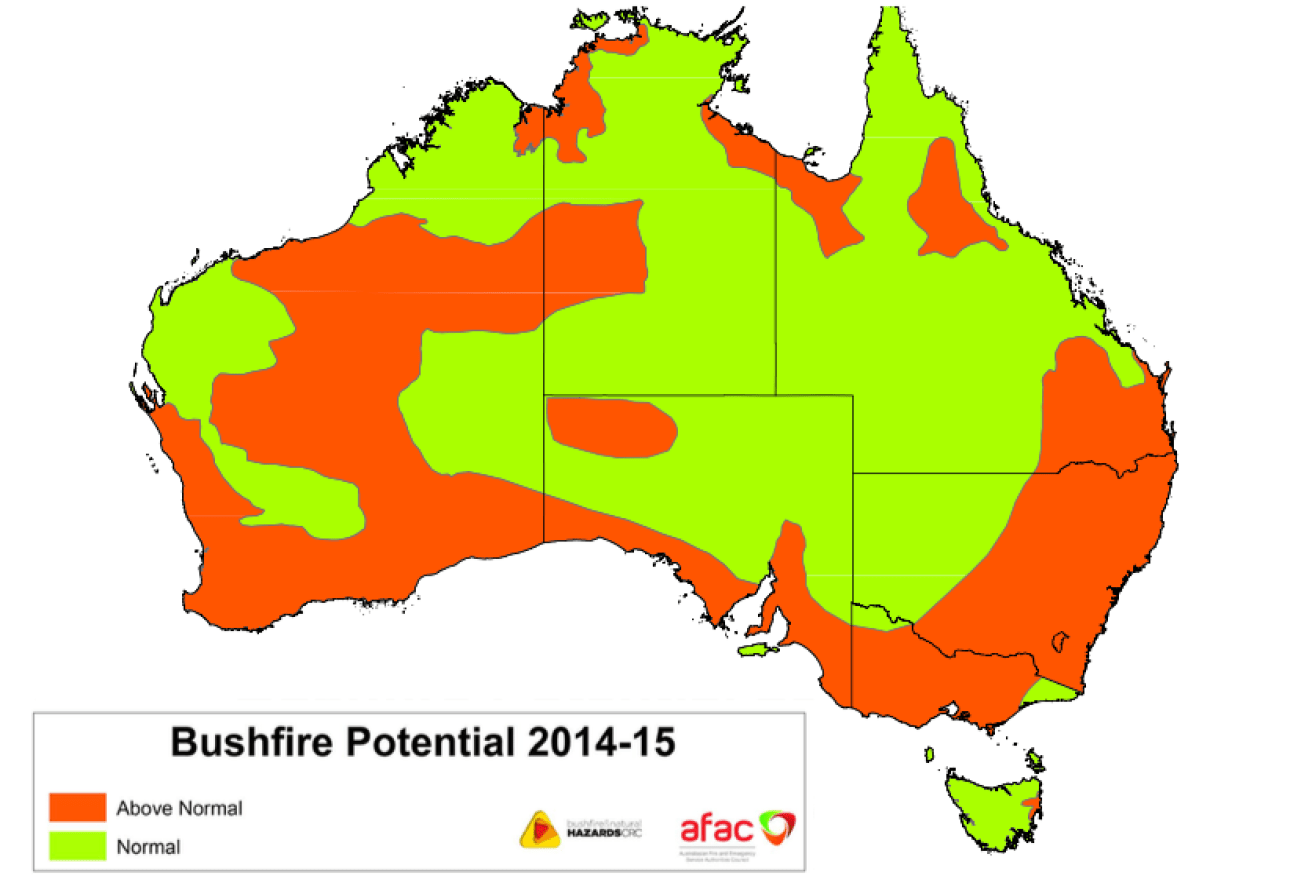This year set to be the hottest – and it gets worse


Bushfire & Natural Hazards CRC
Hot on the heels of the news that this spring was the warmest in Australian history, a new report says 2014 could be the hottest year since weather records began.
Drastic weather changes and weird events are now the norm, with Antarctic glaciers melting at an unprecedented rate, the smog in Los Angeles thickening, and walruses dying on an Alaskan beach because they had nowhere else to go.
Provisional data for 2014 shows that 14 out of the 15 warmest years on record have all occurred in the 21st century, said the World Meteorological Organisation (WMO) in a new report.
• 2014 hottest year on record
• Hottest spring in Australia breaks another record
• Melt rate of Antarctica glaciers speeding
“There is no standstill in global warming,” WMO chief Michel Jarraud said in a press statement.
“What we saw in 2014 is consistent with what we expect from a changing climate. Record-breaking heat, combined with torrential rainfall and floods, destroyed livelihoods and ruined lives,” he said.
“What is particularly unusual and alarming this year are the high temperatures of vast areas of the ocean surface, including in the northern hemisphere.”

Temperatures this spring were above average in most of Australia.
Shocked into action?
While you think these freakish happenings would jolt politicians into action, leading environmentalist Tim Flannery says the findings will have little impact on policymakers.
“Even the most extreme climactic events have no impact on some people,” Mr Flannery, a former Australian of the Year, says.
“It’s hard to imagine us being more isolated on the issue than we are on climate change at the moment”.
Changes in Australia’s environment were mentioned throughout the report, with our heatwave in January, “prolonged warmth” in May, “notable cold waves” in winter and “especially warm” temperatures in Western Australia all receiving a mention.
Rising temperatures
This spring was the hottest on record for the second year running, with temperatures 1.67 degrees celsius above average, according to a Bureau of Meteorology (BoM) report, the largest departure from the average for any season since records began.

Most of Australia is at an increased bushfire risk this year.
In some places like New South Wales, the maximum temperatures were a massive 4.06 degrees celsius above average.
BoM climate monitoring manager Karl Braganza says we can expect hotter summers too, with the 2012-13 summer the hottest on record.
“We’ve got a warming trend going on, so temperatures across Australia are a degree warmer than they were in the first half of 20th century,” Mr Braganza says.
“The main thing throughout this year is that the globe has flirted with an El Niño event. An El Niño event means a large part of the Pacific warms up quite considerably.”
Political isolation
Australia still lags behind the rest of the world in climate change policy, promising a five per cent cut in carbon emissions by 2020.
The US has pledged a 26-28 per cent reduction by 2025, while the UK has promised to cut emissions by at least 80 per cent by 2050.

Australia risks hurting diplomatic relations if it doesn’t take action.
The political differences were evident after the G20 Summit last month, when Foreign Minister Julie Bishop reprimanded US President Barack Obama for his comments that the Great Barrier Reef was under threat.
Mr Flanagan argues Australia is “completely isolated”.
“Even Canada is moving with the US. So I think we’re completely isolated and I think that’s probably bad for Australia,” he says.
“Everything I hear is that the economy is the most important thing.”
Speaking to Sky News on Thursday, ANU Climate Change Institute Professor Frank Jotzo said Australia risked becoming a pariah if it didn’t take action.
“A pledge that would be considered inadequate will have significant costs in terms of diplomatic relations for Australia,” Professor Jotzo said.
Worrying global impacts of extreme heat
1. Australian Open extreme heat policy altered
Next year, Australian Open referees will decide if games continue once the temperature exceeds 40C, after ballboys, players and fans collapsed in this year’s heatwave.
2. Californian smog thickens
Extreme drought and heat have worsened smog in California, leading to the premature deaths of thousands of Californians each year, according to a Los Angeles Times report.

Bushfires will occur more often thanks to dry and hot spring and summers.
3. Elderly at risk
Elderly people who are unable to care for themselves are the biggest collateral in heatwaves, with a 2003 heatwave in France claiming the lives of 15,000 people, most of them elderly.
4. Reservoir levels plunge
Dry and hot summers have seen reservoir levels plunge, with Copeton Dam in northern NSW plummeting from 64 per cent capacity to 26 per cent capacity in a year.
5. Spread of malaria in India
The unprecedented heat expected in Mumbai over the next few decades will be conducive to the spread of the deadliest stain of malaria, according to Indian researchers.
Climate change exacerbated heat will also increase the risk of diseases like dengue fever, while simultaneously reducing the availability of fresh water.

Reservoir levels have plunged in the past year thanks to dry El Nino conditions.
6. Walruses stranded
In October, 35,000 walruses were found on an Alaskan beach, dozens of them dead, when the sea ice they live on completely melted.
According to a CNN report, the walruses, which normally live scattered on ice sheets, had been forced onto the land due to ocean warming.
7. Unprecedented glacier melting
The melt rate of glaciers in Antarctica has tripled over the past decade, contributing to rising sea levels, new analysis this week revealed.
Glaciers melting in west Antarctica contain enough water to raise sea levels by at least a metre.
8. More Australian bushfires
Bushfire researchers say many areas of Australia are predicted to experience an above normal fire risk this summer.








